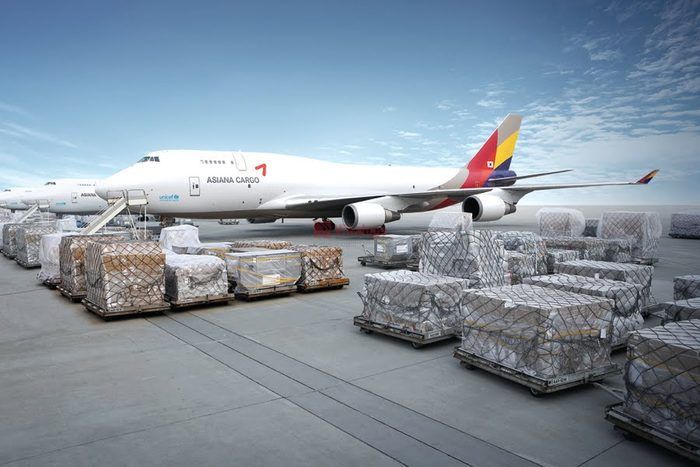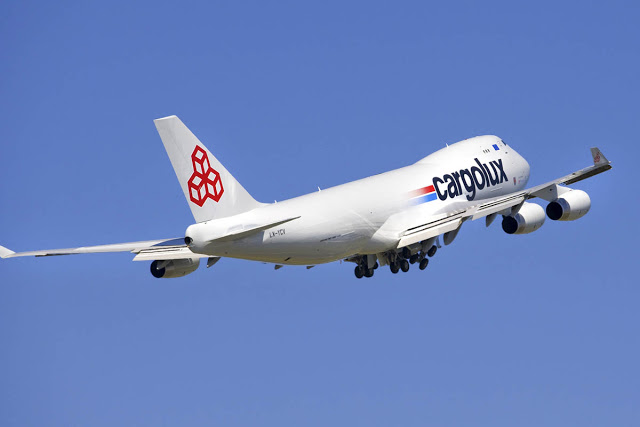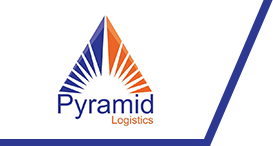You want to learn how to transport goods by air? This article will help you.
Let's take a look at the terminology first.
What is Air cargo?

Air cargo is cargo that is transported by plane, also known as by air.
This is the way in which cargo is transported by a dedicated cargo aircraft (Cargo Aircraft, or Freighter in English), or carried in the belly of a passenger aircraft (Passenger Plane).
Air freight accounts for a small proportion of the total weight of international freight (less than 0.5%), while it accounts for about 30% in terms of value.
According to the aircraft manufacturer Boeing, in 2012, specialized freight aircraft transported about 60% of global air shipments, while passenger aircraft took over the remaining 40%.
Advantages and disadvantages of air transport
Each mode of transport has its own advantages and disadvantages.
With the method of transporting goods by plane, you will see clear differences compared to transport by sea, road ... We can clearly see that shipping by air is the fastest, safest most, but the highest cost. Therefore, this shipping method is often suitable for high value, time-sensitive goods, such as:
Air mail, express mail
Live animals, human organs, remains
Perishable goods (food, fresh flowers, dry ice marinated goods)
Medicine
Valuable items (gold, diamonds)
Technical equipment (high-tech goods, aircraft spare parts, ships, cars)
Luxury consumer goods (electronics, fashion)
See the pros and cons in the next section ...
Advantages of air transportation
As I said above, the biggest advantage of air transport is its high speed. The aircraft has the highest speed of all transport modes today. Average speed of cargo or passenger aircraft is about 800-1000km / h, very high compared to other popular modes such as ships (12-25 knots / hour), train (in Vietnam South only about 60-80km / h), or trucks (60-80km / h). I think the only way to transmit electricity is faster than an airplane!
Second, transport by plane also has the highest safety. You can hear catastrophic plane crashes, but the reality is that air travel is much safer than road, rail, and sea.
There are also other advantages such as:
Unobstructed by topographic surfaces such as roads or waterways, it connects nearly all countries around the world.
Service is quick, punctual, thanks to very fast cruising speeds and cargo characteristics that are often of high value or perishable
Minimize losses incurred by handling, breakdown, or petty theft
Lower shipping insurance fee due to less risk than other methods
Storage fees are usually minimal due to the characteristics of the goods and the speed at which the procedures are processed ...
Those are the advantages of air freight transportation. Now let's look at the other side of the matter ...
Disadvantages of air shipping
The biggest downside is that shipping by air has the highest fares, per kilogram.
I try to estimate the fee very roughly if I want to move goods from Hai Phong to the city. Ho Chi Minh City, only from the port / airport / train station to the same destination (only use one mode of transport, for easy comparison):
Airway (Cat Bi airport - Tan Son Nhat):… VND / kg
By sea (container from Hai Phong port - Saigon port): ...
Railway (Hai Phong station - Binh Trieu station): ...
Road (container truck, Hai Phong inner city - HCMC):
Looking at the numbers, can you see how high the air freight is compared to other means?
Due to such high charges, air freight is often not suitable for low value goods.
The second disadvantage of air transport is that it is not suitable for carrying bulky goods, or large volume goods. The fact is that the two quantities of capacity and cargo mass will be limited above by the cargo compartment size, door size, and net carrying capacity of the aircraft. If you cannot safely bring in / out of the package, or the cargo exceeds the allowable load of the aircraft, then you should forget about this method. With such shipments, ships are often the viable solution.
In addition to the two above points, air transport also has a few other notable disadvantages as follows:
Much affected by weather, even in bad weather conditions such as fog, thunderstorms, etc., it is easy to delay or cancel flights, delay air transport services.
More risky with minor damage, crashes, aircraft hijacking ... Aviation standards are more stringent, so just a few parameters are malfunctioning, affecting flight schedules, even having to cancel flight. In mid-2017, I myself once sat on a Vietnam Airlines plane, when the plane moved out of the waiting room, stopped to perform the final technical inspection, and encountered some problem. I just heard them try the engine buzzing for a long time, then see the captain announcing a technical problem. The plane had to go back to the waiting room immediately, and the passengers had to change to another plane. Any goods on that trip must also change planes. Obviously, modern is harmful to electricity, planes are really "sensitive" than cars and ships at this point.
Stricter requirements relate to regulations and legislation, to ensure flight security and safety. Many types of goods with high risks (such as flammable, explosive ...) will not be accepted by airlines. In the process of checking passengers and goods by scanning, you also feel the strictness of regulations in the field of air transport.
With all these advantages and disadvantages, based on your needs, you will decide whether to transport goods by plane or by truck or ship.
Parties involved in the transport of goods by air
If you look at the shipper's perspective, you will see that there are many parties involved in air transportation:
Postal companies (Postal Company) ship air mail, with document envelopes and packages weighing up to 30 kg. These companies hire airlines' shipping services. For example: EMS, Viettel
Courier companies transport envelopes and parcels up to 75 kg, and also re-lease airline shipping services. Example: Kerry Express.
Integrator companies, delivering envelopes and packages up to 75 kg. They often use their own private transport aircraft, and may sub-lease a portion of the services from airlines. For example: DHL Express, FedEx, TNT Express, UPS
Air Cargo Forwarders, which deliver packages and packings exceeding 75kg, by subcontracting services to airlines. Examples: Agility, CEVA Logistics, C.H. Robinson, Damco, DB Schenker
Airlines (Airline), and airline operators (Air Operators), use their aircraft to carry freight & passengers.
The carriage of goods in air routes between airports is actually done by airlines, or aircraft operators. Of course, international express carriers that have their own aircraft will transport most of the goods they service, with the rest hiring airlines.
As such, the postal, delivery, and air-delivery companies are the airlines' customers.
In fact, the air forwarding companies are still the "traditional" and important customers of the airlines. According to the International Freight Forwarders Association (FIATA), fowarder companies account for 80% of all international shipments by plane. They accept door-to-door air shipments for their customers. And the airlines will specialize in transferring goods from airport to airport (airport-to-airport).
Shipping forwarding process
When preparing to transport goods, it is important to have an understanding of the operational procedures, that is, the steps you will need to take to export or import the shipment (either on your own or through a service unit):
Process of importing goods by air
Export process of goods by air
For imported goods to Vietnam, if you do the procedures yourself at the airport, you may want to know important information such as:
Procedures for receiving goods at Tan Son Nhat airport
Detailed information about TCS warehouse, SCSC warehouse
Address of Tan Son Nhat airport, address of Noi Bai airport
Clearance services at Tan Son Nhat, Noi Bai, Cat Bi
Air transport services

In the air freight sector, shippers may want to hire air transportation service companies. It can be the freight forwarder (freight forwarder) or the general agent appointed by the airline (General Sales Agent - GSA).
Depending on your specific needs, you can use one of the following service forms:
domestic air transportation
international air transportation
air courier
When you want to ship by plane, you will probably be interested in air freight.
Air freight is the amount the shipper has to pay the shipping company to transport a shipment from the port to the destination port (here is an airport, or airport - airport).
These rates are usually fixed per kilogram of goods, and there are different rates divided into weight ranges. For example, department stores are divided into different rates: from 45 kg or less, + 45kgs, + 100kgs, +300 kgs, + 500kgs, + 1000kgs ...
>> See how to calculate air freight
During the transportation process, an important indispensable document that you need to find out is the air waybill (see sample Airway Bill here). Once delivered to the shipping company, you can look up the air waybill on the carrier's website to know the status of your shipment.
Incoterms are used in air transportation
As I do services for customers, in many cases, customers put on the contract and commercial invoice terms FOB or CIF for air cargo, such as: FOB Incheon, CIF Noi Bai ...
To do so is not in accordance with ICC guidelines.
Specifically, in the 11 terms of delivery of Incoterms 2010, there are 4 terms only applicable to sea and inland water transport (FAS, FOB, CFR, CIF). The point that divides the risk between the buyer and the seller is the "ship's rail". If applied to air cargo, there is no "ship rail", and if unfortunately there is a loss, there will be no basis for division of responsibility. Such customary use should therefore not be used, although customs often overlook this error during clearance.
Meanwhile, the remaining 7 conditions of Incoterms 2010 can be applied to all modes of transport: road, rail, sea, air. Therefore you should use the terms where the point of risk distribution is when the goods are delivered to the carrier (carrier or forwarder). Specifically:
FOB => FCA
CFR => CPT
CIF => CIP
Common terms for air freight transportation
Here are some common terms in air transport, including abbreviations, most of which come from the English language:
A2A - Airport-to-Airport: transportation from departure airport to destination airport
ATA - Actual Time of Arrival: Actual arrival time
ATD - Actual Time of Departure: Actual departure time
AWB - Air Waybill: air waybill, divided into MAWB - Master Air Waybill (air waybill issued by the airline) and HAWB - House Air Waybill (house bill of lading issued by the forwarder)
Booking: Recommended to stay on the plane, confirmed by airline
Dimensional Weight: A measure of volumetric weight, which is the space or volume of a shipment.
FCR - Forwarder's Certificate of Receipt: The forwarder's certificate of receipt of the goods
FTC - Forwarder's Certifficate of Transport: The forwarder's shipping certificate
FWR - Forwarder's Warehouse Receipt: The forwarder's warehouse receipt (issued to the exporter)
GSA - General Sales Agent: Airline agent appointed by the airline
IATA - International Air Transport Association: International Air Transport Association
NOTOC - Notification To Captain: Notification to Captain, the list of goods on the plane informing the flight captain.
TACT - The Air Cargo Tariff: Table of air freight, announced by the airline
POD - Proof Of Delivery: Proof of delivery, documents showing that the carrier has delivered according to the agreement.
Volume charge: Air freight is calculated by cargo capacity (instead of weight).
Weight charge: Air freight is based on the actual weight of the goods
There are many more terms and acronyms, so I will summarize more fully in a separate article for your reference.









